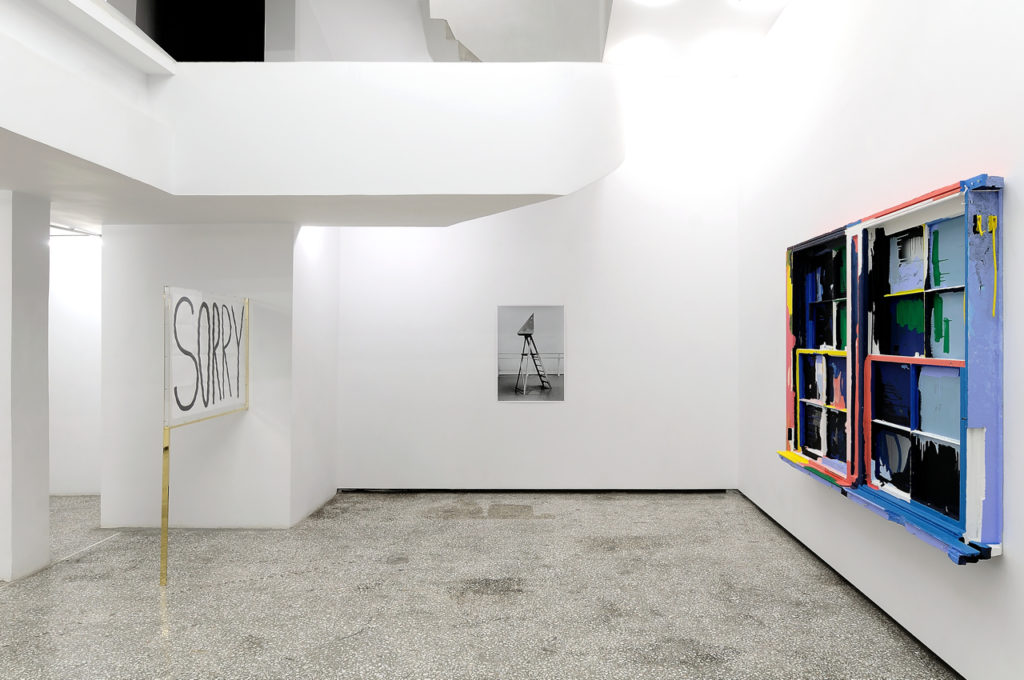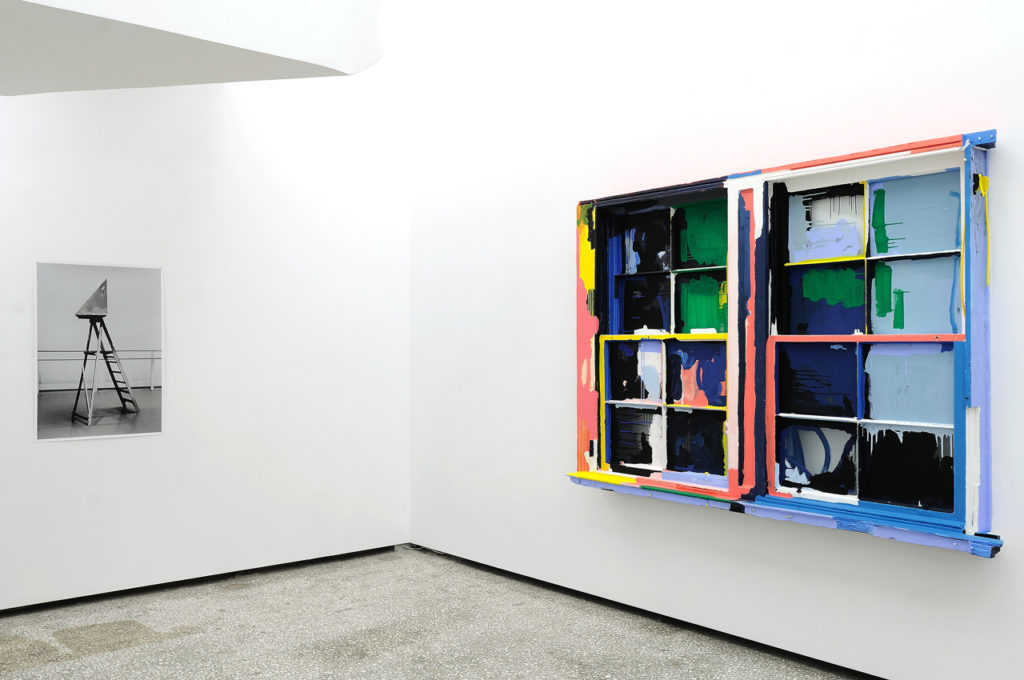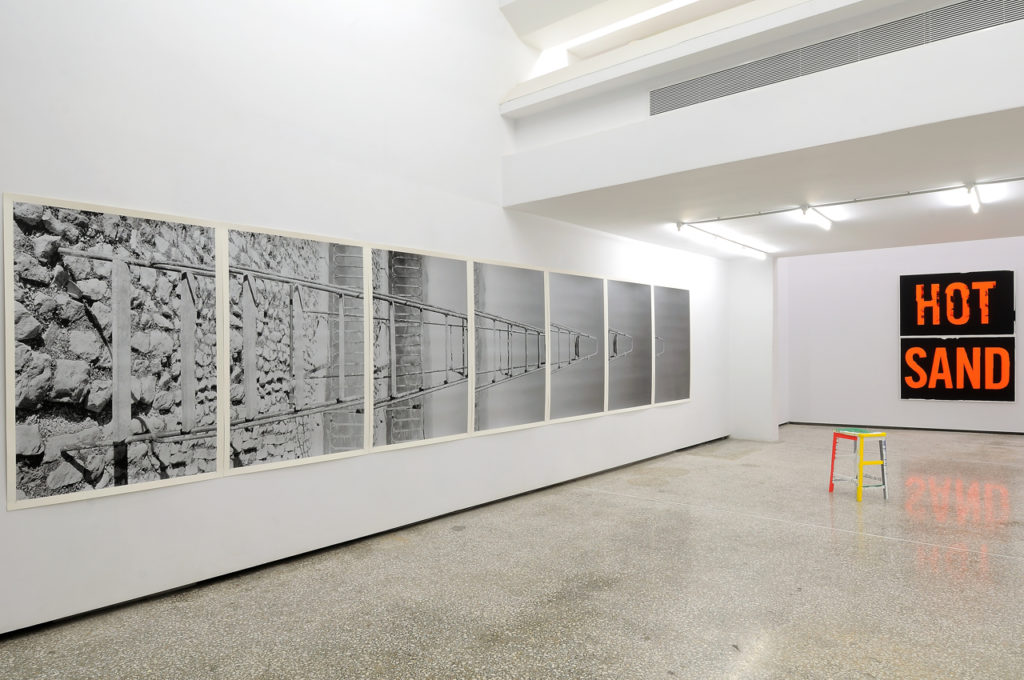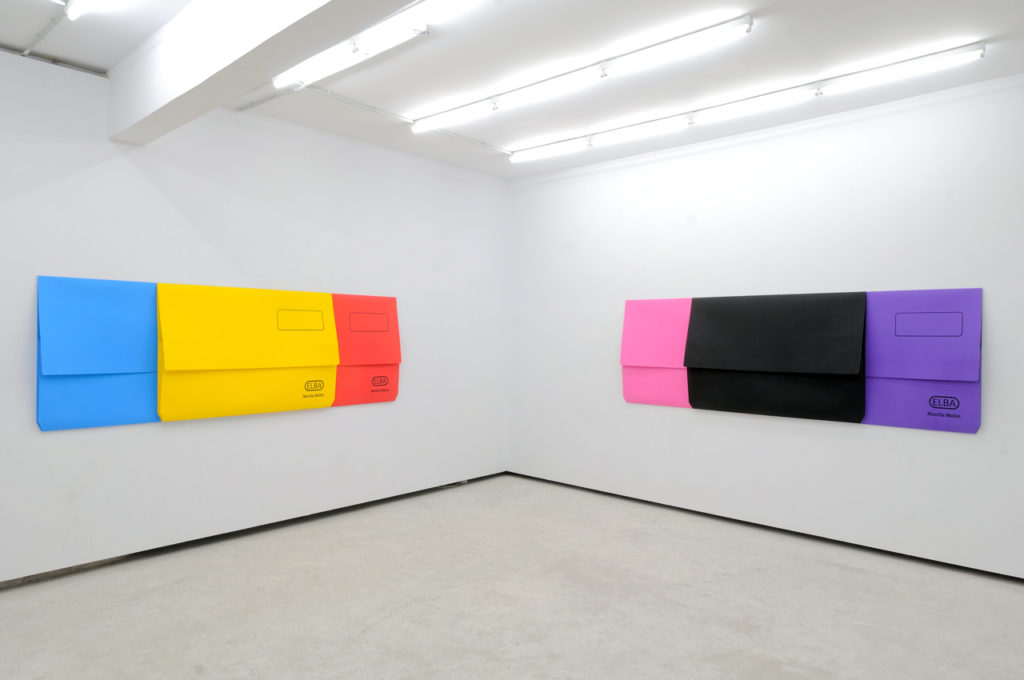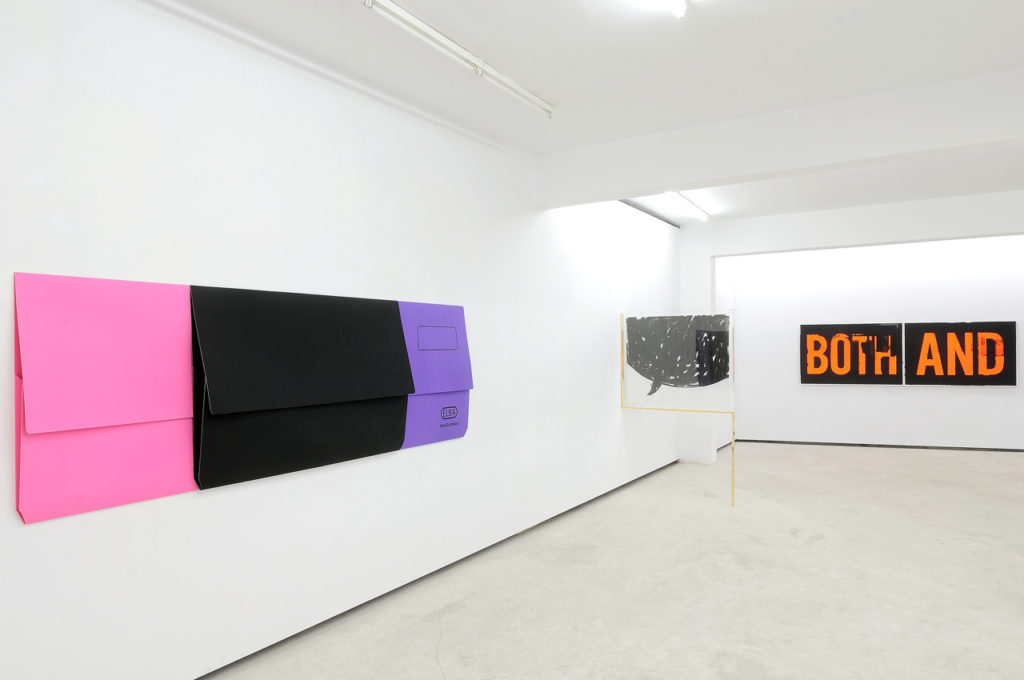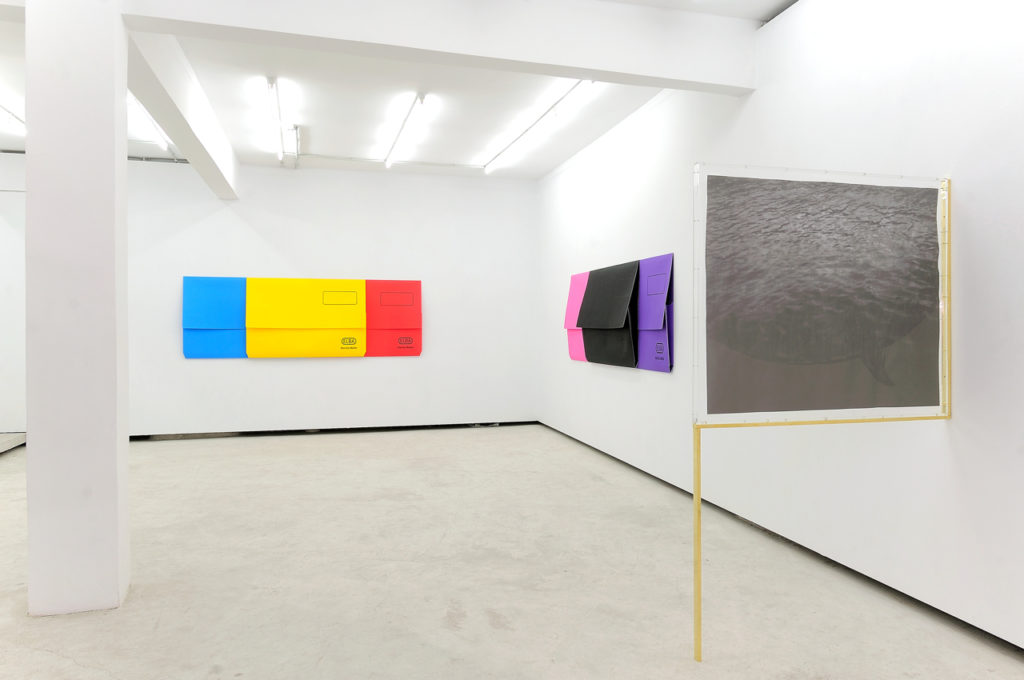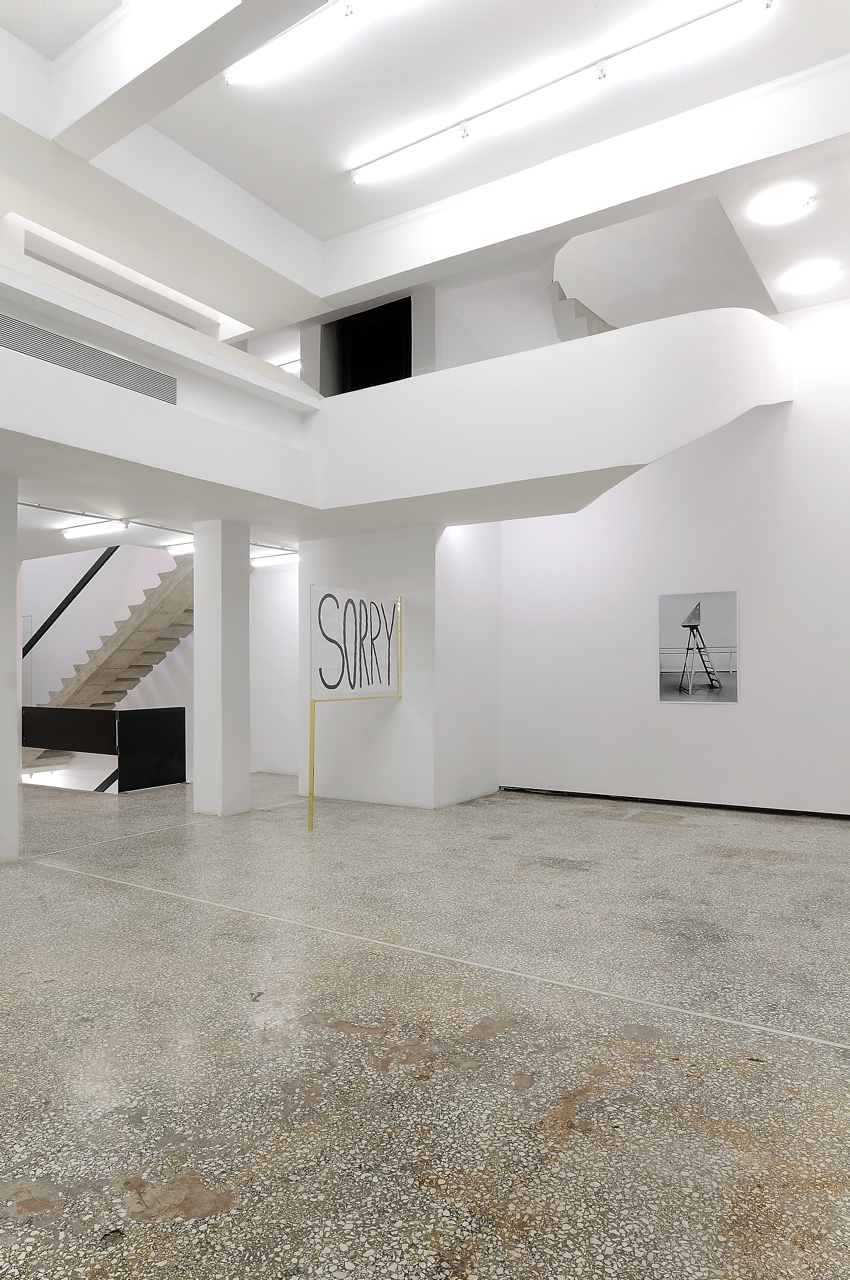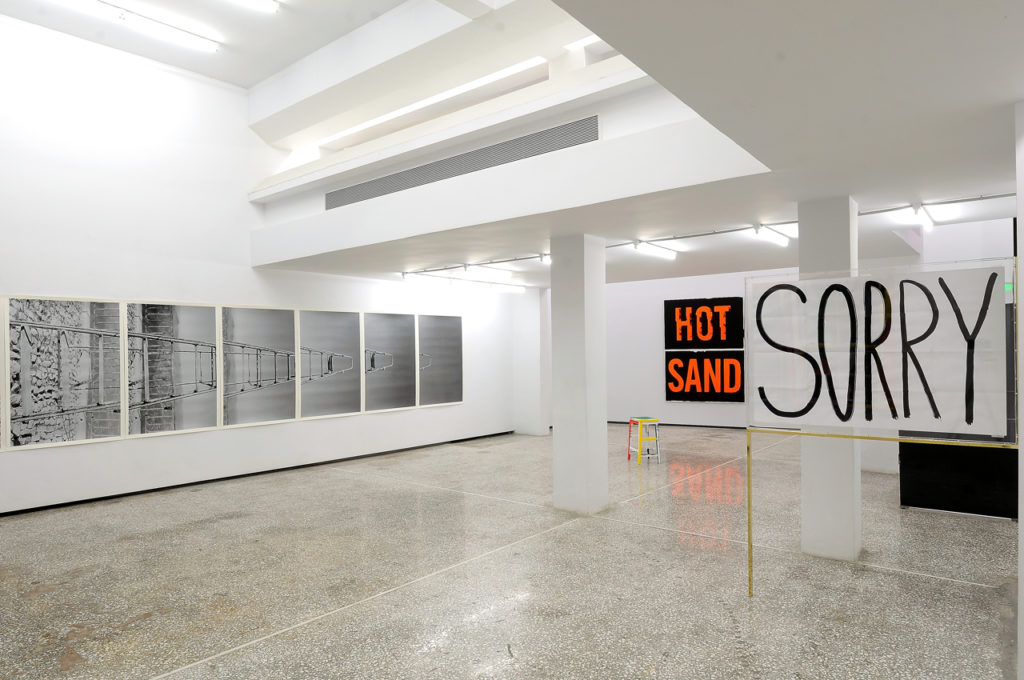Scott Myles
ELBABLE
November 18, 2010–January 22, 2011The Breeder, Athens
The Breeder are pleased to present ELBABLE Scottish artist Scott Myles’ second solo exhibition within the gallery. Myles will present a new body of work across two floors of The Breeder Gallery.
This new installation includes a series of constructed paper sculptures meticulously produced by the artist and shown here for the first time (The Past from Above (ELBA…))’ (all works 2010). Formally, the hand-made folders have a relationship to seriality, post-minimalism and colour-field painting. Each one is a unique simulacra of an Elba document folder designed to hold A4 full-scap paper. Instead of using manilla paper, Myles has screen-printed each colour and logo, to create these oversized facsimiles. In effect, Myles is making public a private system for compartmentalizing information. Nothing is currently contained within the folders, they instead hint at potential, as containers for unspecified objects. The trade name Elba is also the name of the Mediterranean island in Italy where Napoleon Bonaparte was exiled in 1814. In effect, the island of Elba became a prison, a form of containment for Napoleon.
Myles regularly explores language within his works. ELBABLE is reminiscent of the palindrome “able was I ere I saw elba’ attributed to Napoleon who purportedly uttered the words on first sighting the Italian island where he was imprisoned. The palindrome usefully underscores the split meaning and doubling that occurs in much of Myles’ practice. HOT SAND and BOTH AND playfully reference generic instructional signage. BOTH AND consists of two screenprinted aluminium panels presented side by side to underscore their relationship to language. BOTH AND also references the American architect Robert Venturi, author of Learning from Las Vegas (1972), a significant treatise on the sign, and form and function in architecture. Faced with the choice of either/or, Venturi opts for both/and. HOT SAND openly posits simultaneous meanings, including physical sensations of the beach, and the industrial process of making sculpture. Myles’ statement functions as a crossroads, it oscillates between a warning sign and a physical recollection or memory.
Myles’ exhibition title ELBABLE moves inwards, as in perspective with an ultimately central vanishing point. Perspective, multiple points of view, panoramic landscape, travel and history are all bound up in Myles’ work ‘Mont Ventoux Panorama (Petrarch)’. The artwork has been produced site specifically for The Breeder space in Athens. Installed upon the side wall of the gallery, the work can be viewed from multiple vantage points. Myles recently undertook a journey to Mont Ventoux in Provence, France. As well as being known as a site for the Tour De France competition, Mont Ventoux is famous as having been climbed by the Italian poet Francesco Petrarca in 1336. Petrarch’s only motive for the ascent was to see the view and this is often sited as the beginning of a new humanistic Renaissance spirit. Petrarch expressed the ascent in allegorical terms. Myles presents seven screenprints on paper depicting a ladder found by chance and photographed by the artist at the summit of the mountain. In opposition to the verticality of the mountain and the gallery wall, Myles hangs his prints horizontally subverting the view and creating a new panorama and outlook.
See Through Window and Untitled (stool) also infer a problem of visibility. Myles has produced a bronze cast of a wooden stool, and painted over the heavy art historically laden material with expressionistic brushstrokes. A kind of impersonation occurs, Myles imitating the paint-splattered stool that’s been carefully molded to retain its surface detail. The action of painting undoes the cast, obliterating the fine detail and covering up the laboriously fabricated bronze surface. Similarly Myles presents a large window upon the gallery wall, however in this instance he presents the ‘original’ readymade object, this time in place of a large window sited within the building wall when the space was in use previously as an ice cream factory. A found object of sorts, the action of painting directly upon the window frame and glass denies the viewer their view, but offers them insight into the artist’s point of view.
A lineage of ideas can be traced through Myles’ production as an artist. One strand of his output has been the adoption of forms and ideas associated with brand names such as ASKIT, (a common painkiller) and STABILA, (a German manufacturer of spirit levels). It could be argued that Myles’ appropriation of Felix Gonzalez-Torres’ posters are also a form of re-branding. For SORRY and The Second Lecture Myles has written in ink onto posters by the late Cuban/American artist Felix Gonzalez-Torres. Myles obtained these posters as any viewer of Gonzalez-Torres’ works does, participating in the social nature of the artists work. The posters are each contained within a specially constructed perspex box, and is supported by a polished brass display structure that uses both the wall and floor for support. Myles has previously described the leg as being somewhat neurotic, it literally holds up his fragile construction, making more explicit the complicated re-presentation of Gonzalez-Torres’ posters. Myles explores Marcel Mauss’ theory of reciprocity in relation to gift economies and exchange, and is interested in the notion of a reply.
Scott Myles was born in Dundee, Scotland in 1975. He lives and works in Glasgow.
Recent solo exhibitions include: ELBA, Glasgow Print Studio, Glasgow (2010), Search and Research, Projects in Art and Theory, Cologne (2009), We Require a Response, Meyer Riegger, Karlsruhe (2008), MISSING WORDS, The Modern Institute @ Sadie Coles HQ, London, ASKIT, The Modern Institute, Glasgow (both 2007), Grey Matter, Galleria Sonia Rosso, Turin (2006), Kunsthalle Zurich, Zurich and The Breeder, Athens (both 2005).
Gro up exhibitions include: Languages and Experimentations, Mart, Rovereto (2010), Richard Prince and the Revolution (curated by Jonathan Monk), ProjecteSD, Barcelona, The Associates, Dundee Contemporary Arts, Dundee (both 2009), Contemporary Scottish Art: New Acquistitions & Loans, Scottish National Gallery of Modern Art, Edinburgh, On Interchange/ Interludes of a Collection, Museum Kurhaus Kleve, Kleve (both 2008), Tate Triennial: New British Art, Tate Britain, London (2006), The Last Generation, Apex Art, New York, Solo Show Solo Soul, FRAC Haute- Normandie, Rouen, Herald Street & The Modern Institute present, GBE, New York, Theorema, Collection Lambert: Musèe d’art d’Avignon, Avignon (all 2005), Genesis Sculpture, Domaine Pommery, Reims (2004), Context, Form, Troy (Young Scene 03), Secession, Vienna (2003).
Public collections include: Tate, UK, MOMA, New York, USA and SNGMA, Edinburgh, UK.
